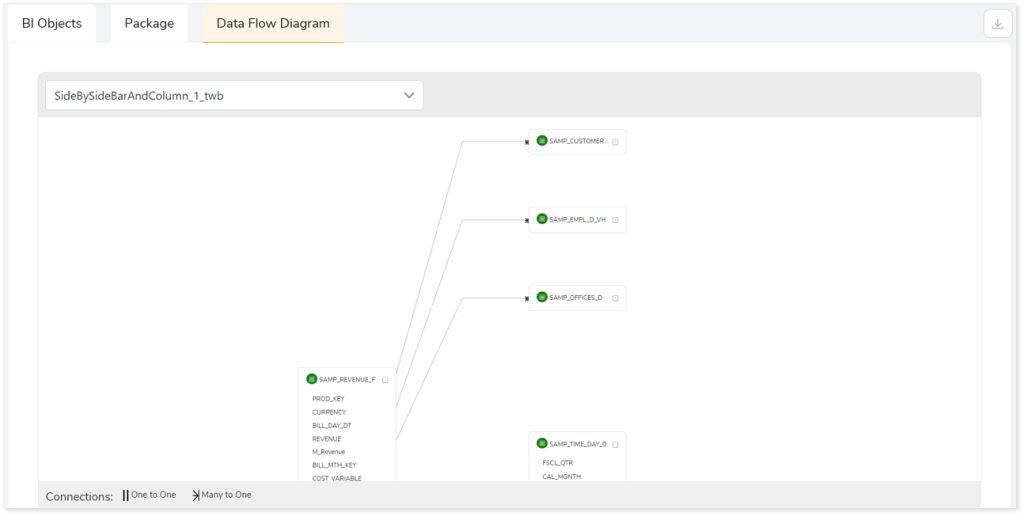Tableau to Power BI Conversion Report
This topic provides a comprehensive report of Tableau to Power BI conversion. The conversion pipeline converts Tableau workbooks to Power BI equivalents.

- Total BI Objects: Displays the number of BI objects. It also gives a segregated view of how many objects are successfully converted and how many failed.
- Status: Provides status of the BI Conversion stage.
- Description: A brief description of the stage is displayed.
- Time Taken for Execution: The time taken for conversion.
In This Topic:
BI Objects
This section displays transformed artifacts containing datasets and reports. The converted artifacts are directly consumable on the modern BI platform. The left panel lists all the transformed artifacts along with their conversion status. The right panel shows information about datasets and reports within each artifact, including their type, and status. In addition, if a dataset or reports fails to convert, a remark is displayed with an error message to help you understand the error and fix it.
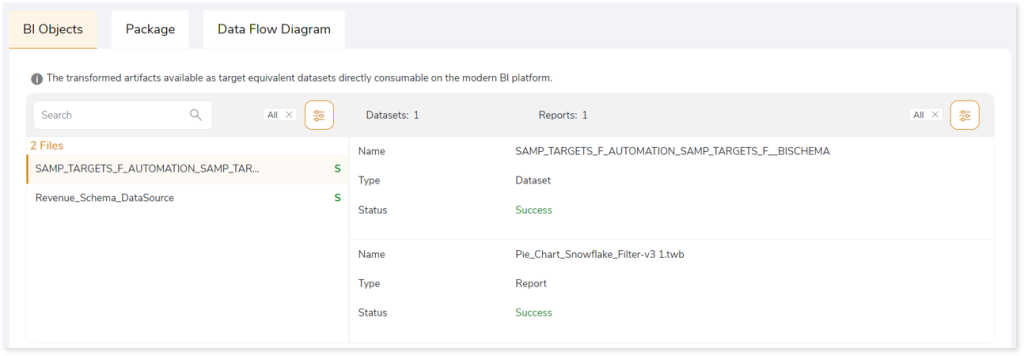
Package
This topic provides the converted artifacts in the pbip file format which can be executed directly on the target platform. Select  to download the converted artifacts for offline use.
to download the converted artifacts for offline use.
For every input TWB file, a converted artifact is generated which includes a PBIP output file, report file, and semantic model.
- The PBIP file contains the converted output artifacts that can be directly executed on the target platform.
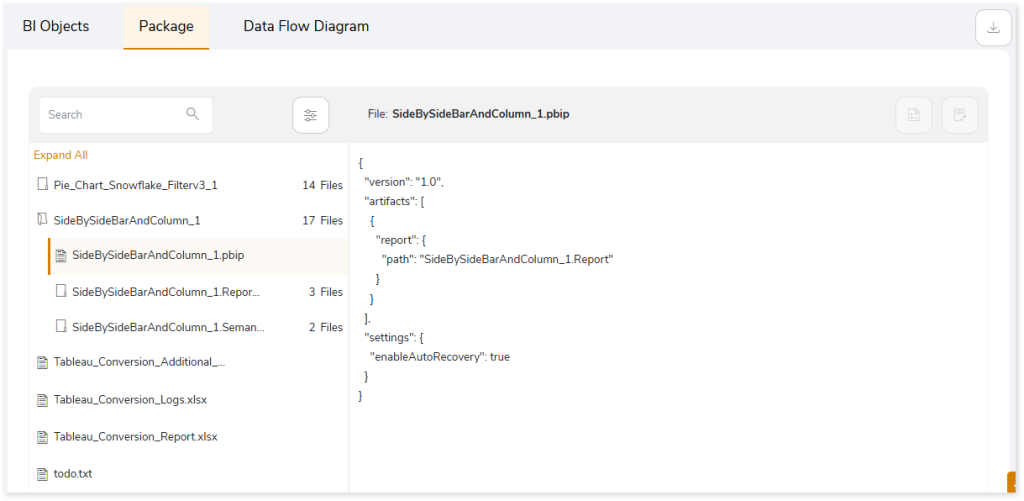
- The Report file contains the data required to generate the visuals. The PBIP output file retrieves this data to display visuals on the target platform.
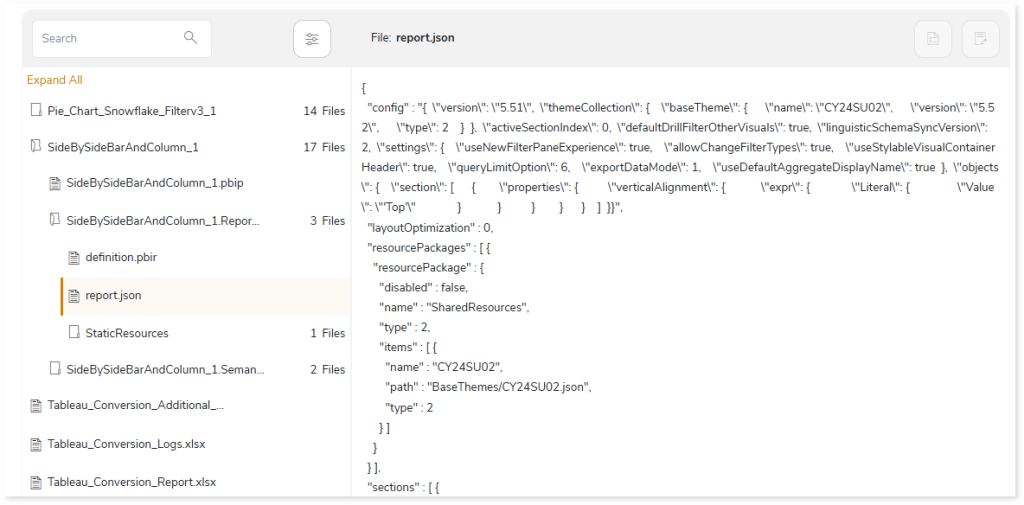
- The Semantic model contains information about datasets and their relationships:
- model.tmdl file contains details of all the tables in the semantic model.
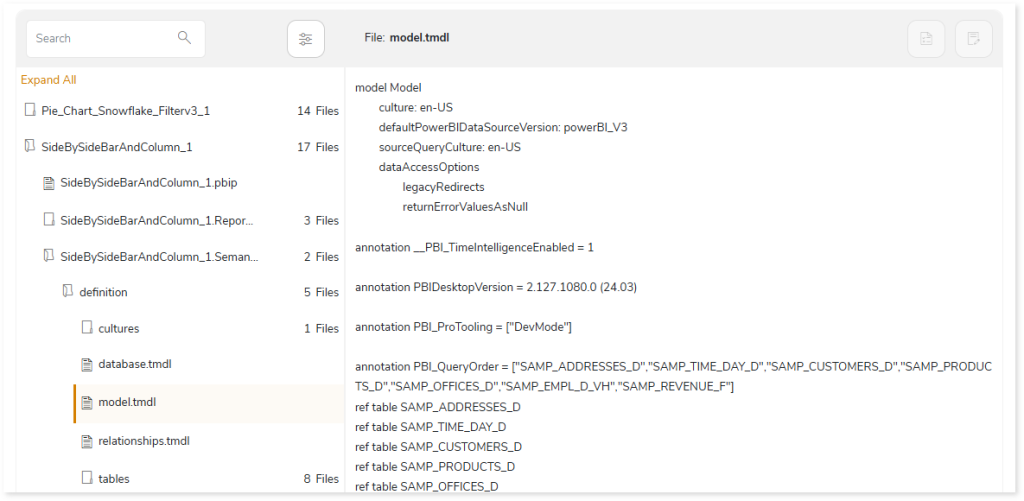
- relationships.tmdl file contains relationship details, including cardinality.
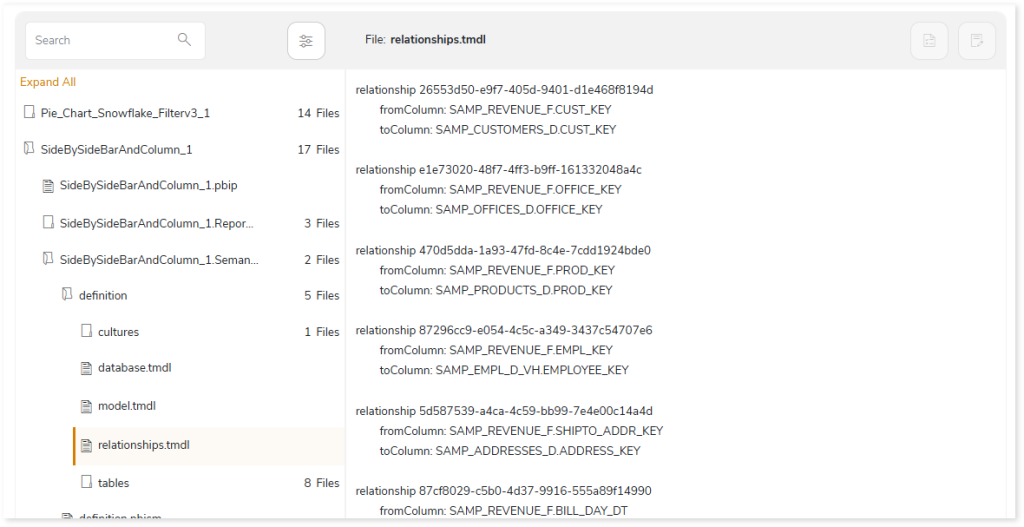
In addition, you can access the Tableau_Conversion_Additional_Help.xlsx, Tableau_Conversion_Logs.xlsx, and todo.txt reports, each offering detailed error specifications and troubleshooting information to help you quickly detect and resolve issues during code transformation.
- The Tableau_Conversion_Additional_Help.xlsx report contains a detailed error specifications generated during the transformation process. Error specifications include:
- Error messages with clear explanations for quick issue resolution.
- Unsupported components or properties that cannot be auto converted and LeapLogic has not implemented alternative logic or methods for conversion.
- Technical limitations that prevent the conversion of certain properties or components.
- Partially supported components
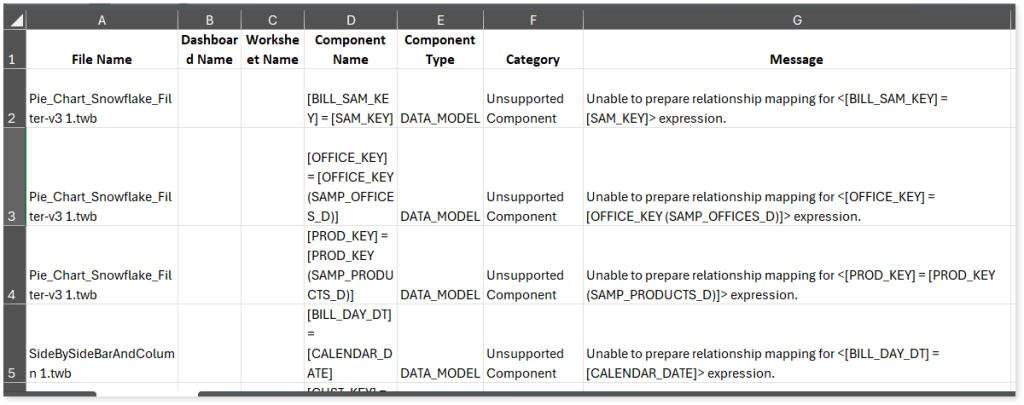
- The Tableau_Conversion_Logs.xlsx report contains information about the components or properties that are not supported in target environment and require manual intervention for successful conversion. In such cases, LeapLogic has implemented alternative logic or methods to convert the source components or properties to the target-equivalent.

- The todo.txt report contains all error messages and issues encountered during code transformation. It includes warnings, errors, alerts, and informational messages to guide further actions for the successful conversion of components or properties to the target equivalent.
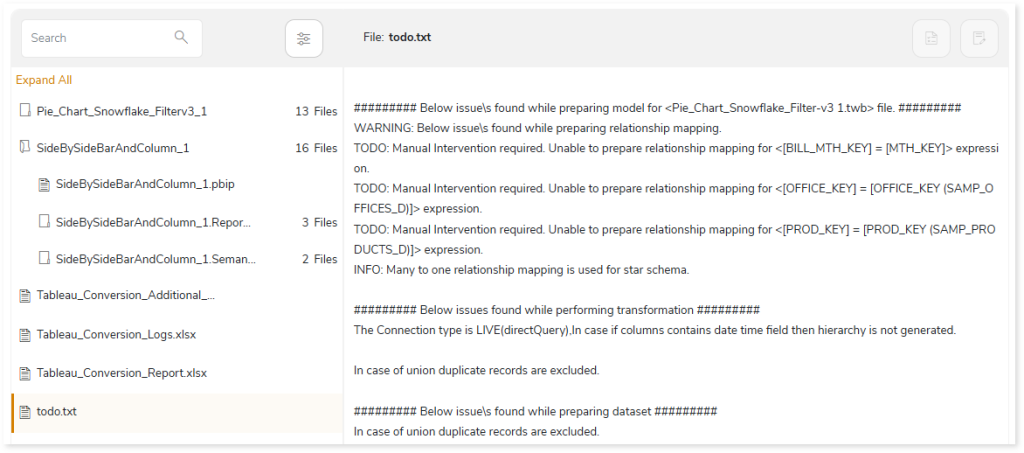
In the Package section you can also see a Tableau_Conversion_Report.xlsx report which provides detailed information about the Tableau conversion including the number of total, failed, successfully transformed charts, visual objects, calculations, filters, and more. It also includes information about the automation level indicator along with deductible and deducted script quota.
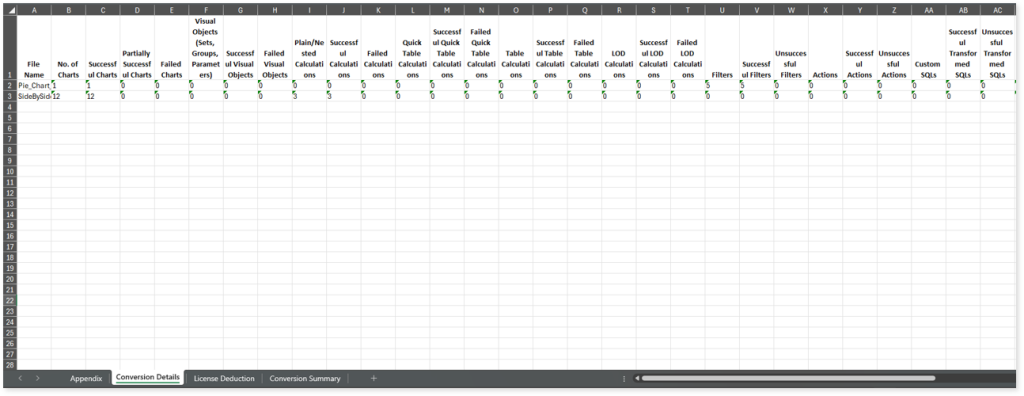
This report contains the following information:
- Appendix: Provides information about the weightage of each component used to calculate the conversion automation Percentage.
- Conversion Details: Provides information about the number of total, failed, successfully transformed charts, visual objects, calculations, filters, etc., along with the conversion automation percentage.
- License Deduction: Provides information about deductible script quota (the quota that needs to be deducted) and deducted script quota (the actual script quota deducted from the license).
- Conversion Summary: Provides the overall conversion automation percentage, i.e., the automation percentage calculated across all scripts.
Data Flow Diagram
Here, you can see the entity relationship diagram for the dataset. This Data Flow Diagram gives a clear representation of data flow along with the cardinality. The cardinal relationships are:
|
Cardinal relationship |
Description |
Notation |
|
one-to-one |
One instance of a table is associated with only one instance in another table |
 |
|
one-to-many |
One instance of a table is associated with multiple instances in another table |
 |
|
many-to-one |
Multiple instances of a table are associated with one instance in another table |
 |
|
many-to-many |
Multiple instances of a table are associated with multiple instances in another table |
 |
